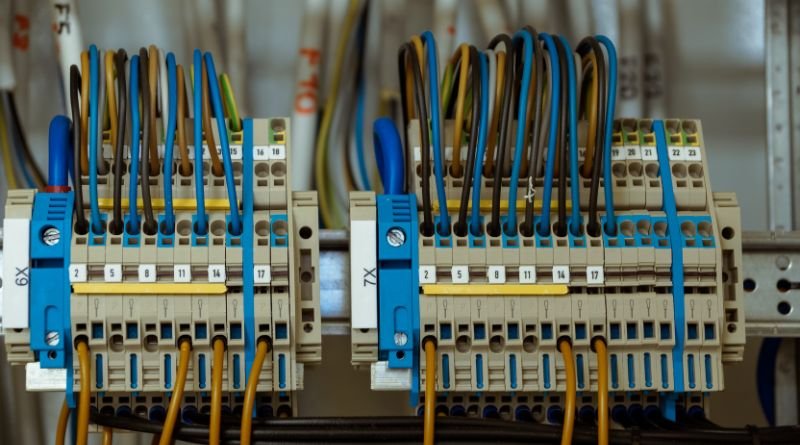In the digital age, data security and privacy have become increasingly essential. However, unauthorized leaks continue to pose a significant threat to individuals and organizations alike. The website thejavasea.me has recently come under scrutiny due to its involvement in leaks associated with aio-tlp. This article delves into the intricacies of thejavasea.me leaks, their implications, and how such breaches highlight the growing need for improved cybersecurity measures.
Understanding thejavasea.me and aio-tlp
The website thejavasea.me has gained attention due to its alleged role in sharing sensitive data. The term aio-tlp stands for “all-in-one threat leak platform” and refers to platforms that facilitate the collection and dissemination of leaked information, often of sensitive nature. These platforms can include personal data, business records, financial information, and even intellectual property. The information shared on these platforms is often obtained through illegal means, such as hacking or unauthorized access to databases.
The emergence of thejavasea.me as a leak repository has raised concerns within the cybersecurity community, as well as among businesses and individuals who fear potential exposure. This article aims to clarify the implications of these leaks and offer insights into best practices to counteract such threats.
What Are Data Leaks and Why Do They Occur?
A data leak refers to the unauthorized exposure of sensitive information. Such breaches can happen through various channels, including insecure networks, weak passwords, and malicious attacks by hackers. The reasons behind data leaks vary but can generally be categorized into two main types:
- Malicious Intentions: Hackers or cybercriminals target organizations or individuals to steal valuable information, often with the intention of selling it on the dark web or using it for blackmail.
- Accidental Exposure: In some cases, organizations or individuals may inadvertently expose sensitive information through misconfigurations, poor security practices, or software vulnerabilities.
Data leaks, such as those associated with aio-tlp on thejavasea.me, usually fall into the first category. The information is often obtained via phishing attacks, exploiting security flaws, or even inside sources willing to disclose confidential data.
thejavasea.me’s Role in Data Leaks
The thejavasea.me website reportedly acts as a platform for hosting and disseminating leaked information. Unlike typical websites, such platforms are often built to be resilient against takedowns by using encrypted servers, anonymized domains, and other measures to mask their identity. Thejavasea.me stands out due to its specialization in housing information related to aio-tlp leaks.
This platform has been linked to several high-profile breaches where sensitive information was disclosed without the consent of the individuals or entities involved. Some of the most common types of information found on the site include:
- Personal Identifiable Information (PII): Names, addresses, phone numbers, and social security numbers of individuals.
- Financial Data: Banking information, credit card details, and transaction records.
- Corporate Data: Trade secrets, business plans, and employee records.
Legal and Ethical Concerns of Hosting Leaked Information
Hosting leaked information presents both legal and ethical challenges. For one, the content shared without authorization infringes on privacy rights and can harm individuals and businesses. Additionally, distributing stolen data is illegal in many jurisdictions. As a result, thejavasea.me faces potential legal action from affected parties, especially if they can prove damages resulting from the leaks.
Ethically, websites like thejavasea.me undermine trust in digital systems and violate privacy rights. The presence of such platforms on the internet calls for a broader discussion on accountability and the role of governments and private companies in combating cybercrime.
Implications of thejavasea.me Leaks for Individuals and Organizations
Data leaks have far-reaching consequences, affecting both personal lives and business operations. The following outlines some of the major impacts for both groups:
For Individuals
- Identity Theft: When personal information such as social security numbers or banking details are exposed, individuals are at a heightened risk of identity theft. Criminals can use this information to impersonate victims, leading to fraudulent activities that can affect their credit scores and financial stability.
- Loss of Privacy: Exposure of personal information online infringes on individuals’ right to privacy. Once data is leaked, it is challenging, if not impossible, to retract it fully.
- Mental and Emotional Stress: Being a victim of a data leak can cause significant stress. The feeling of being violated and the fear of potential financial repercussions can affect an individual’s mental well-being.
For Organizations
- Financial Losses: Businesses that fall victim to data leaks often suffer financial losses. This may come in the form of regulatory fines, legal fees, or revenue loss as a result of damaged reputation.
- Reputation Damage: Once an organization’s data is leaked, clients and customers may lose trust in its ability to secure information. This loss of reputation can have long-term repercussions on customer loyalty and brand value.
- Operational Disruption: Cybersecurity incidents often require time and resources to address. Organizations must conduct investigations, communicate with stakeholders, and implement additional security measures, which can disrupt normal operations.
Cybersecurity Measures to Prevent Data Leaks
The prevalence of platforms like thejavasea.me underscores the need for robust cybersecurity practices. Here are some key measures to help mitigate the risk of data leaks:
1. Strong Authentication and Access Controls
Enforcing strong authentication methods, such as two-factor authentication (2FA), can significantly reduce the risk of unauthorized access. Access controls should also be implemented, ensuring that only authorized personnel have access to sensitive data.
2. Regular Security Audits and Vulnerability Assessments
Routine security audits help identify and address vulnerabilities within an organization’s systems. By conducting vulnerability assessments, businesses can proactively patch security flaws before they can be exploited by malicious actors.
3. Employee Training and Awareness Programs
Many data breaches occur due to human error. Training employees on best practices in cybersecurity, including identifying phishing scams and using secure passwords, can minimize the risk of accidental data leaks.
4. Data Encryption and Backup
Encrypting data ensures that even if unauthorized individuals gain access, the information remains unreadable. Regular backups are also essential, as they allow organizations to recover data quickly in the event of a breach.
5. Incident Response Plans
An effective incident response plan is crucial for mitigating damage following a data breach. Such plans outline steps for containing the breach, communicating with stakeholders, and restoring normal operations as quickly as possible.
The Role of Governments and Tech Companies in Combating Data Leaks
The existence of platforms like thejavasea.me raises questions about the role of governments and technology companies in preventing the spread of leaked information. Some countries have enacted stringent data protection laws, such as the General Data Protection Regulation (GDPR) in the European Union, which holds companies accountable for securing user data. These regulations require companies to implement safeguards and impose heavy penalties for non-compliance.
Technology companies, particularly those that manage online platforms, also bear responsibility for preventing the spread of unauthorized information. They can achieve this by monitoring for illegal content and cooperating with law enforcement agencies to take down websites that violate privacy and security laws.
Conclusion: Addressing the Threat of thejavasea.me Leaks
The leaks associated with thejavasea.me aio-tlp reveal the pressing need for stronger cybersecurity measures and regulatory frameworks. As data breaches continue to pose risks to individuals and organizations alike, all stakeholders must work collaboratively to develop solutions that protect sensitive information and deter cybercriminals.
Addressing data leaks requires a multi-faceted approach involving technological, legal, and educational interventions. By implementing best practices in cybersecurity, increasing regulatory oversight, and promoting awareness, society can work towards reducing the prevalence of platforms like thejavasea.me and safeguarding the digital environment.




